
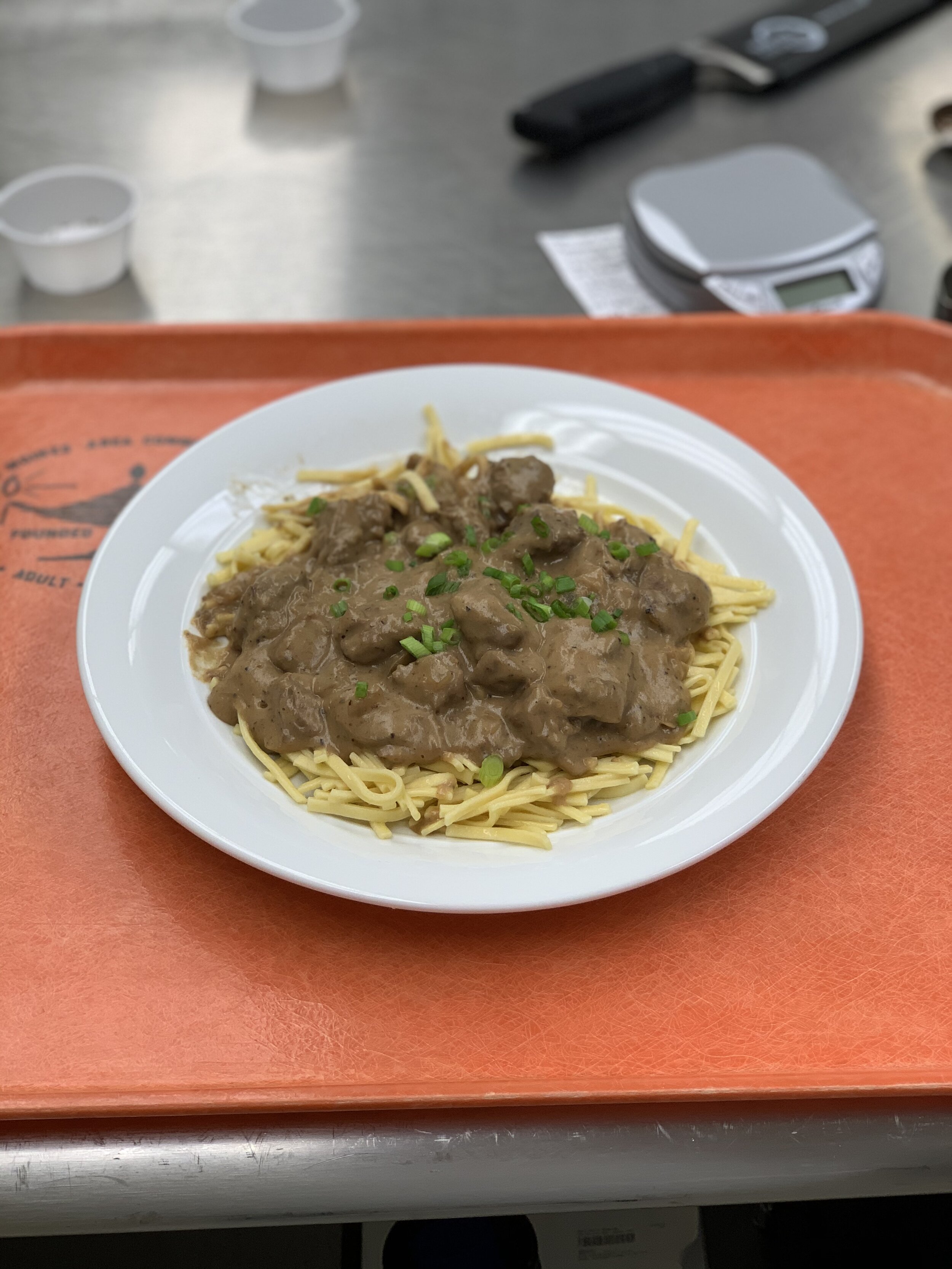
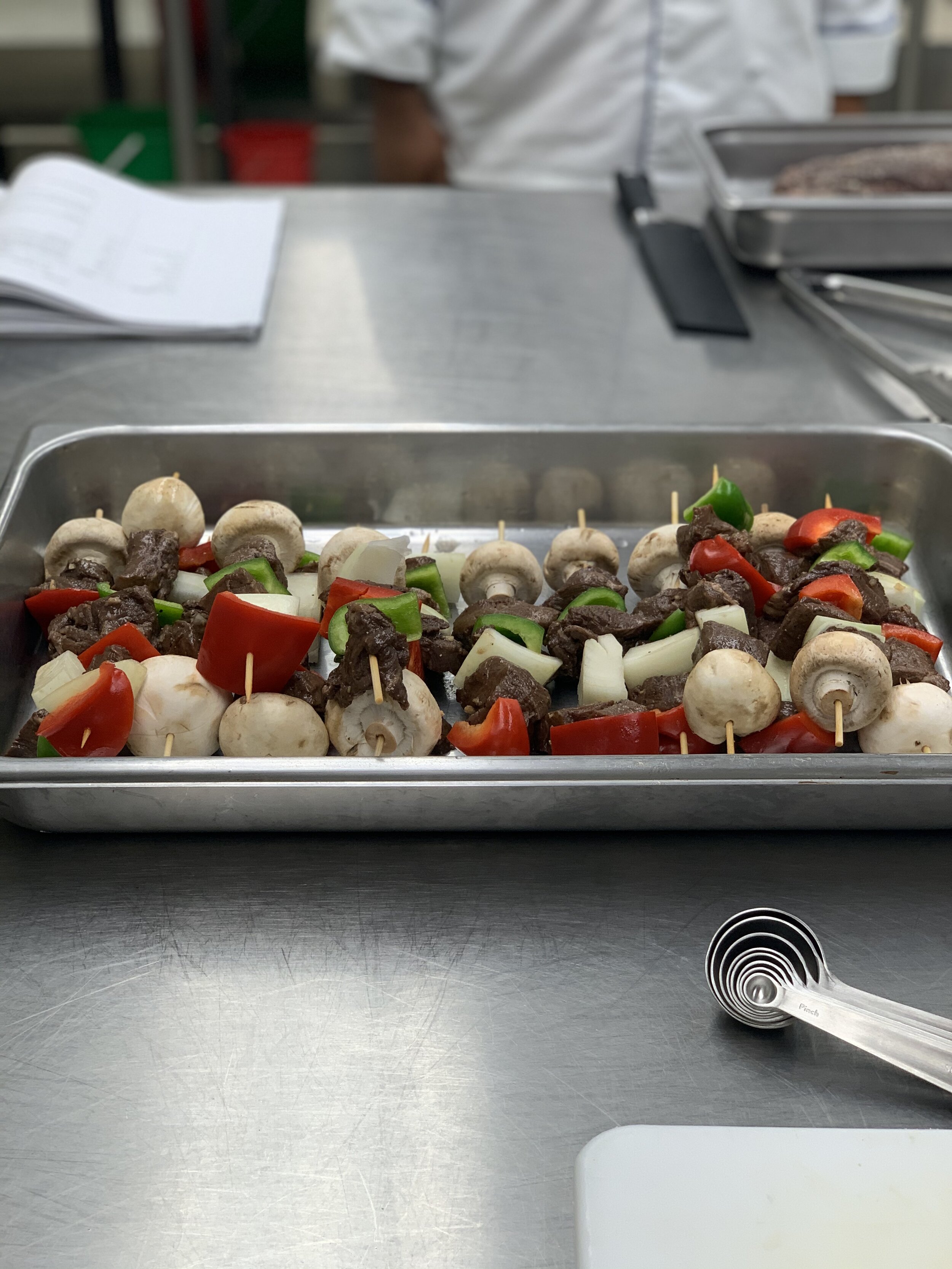
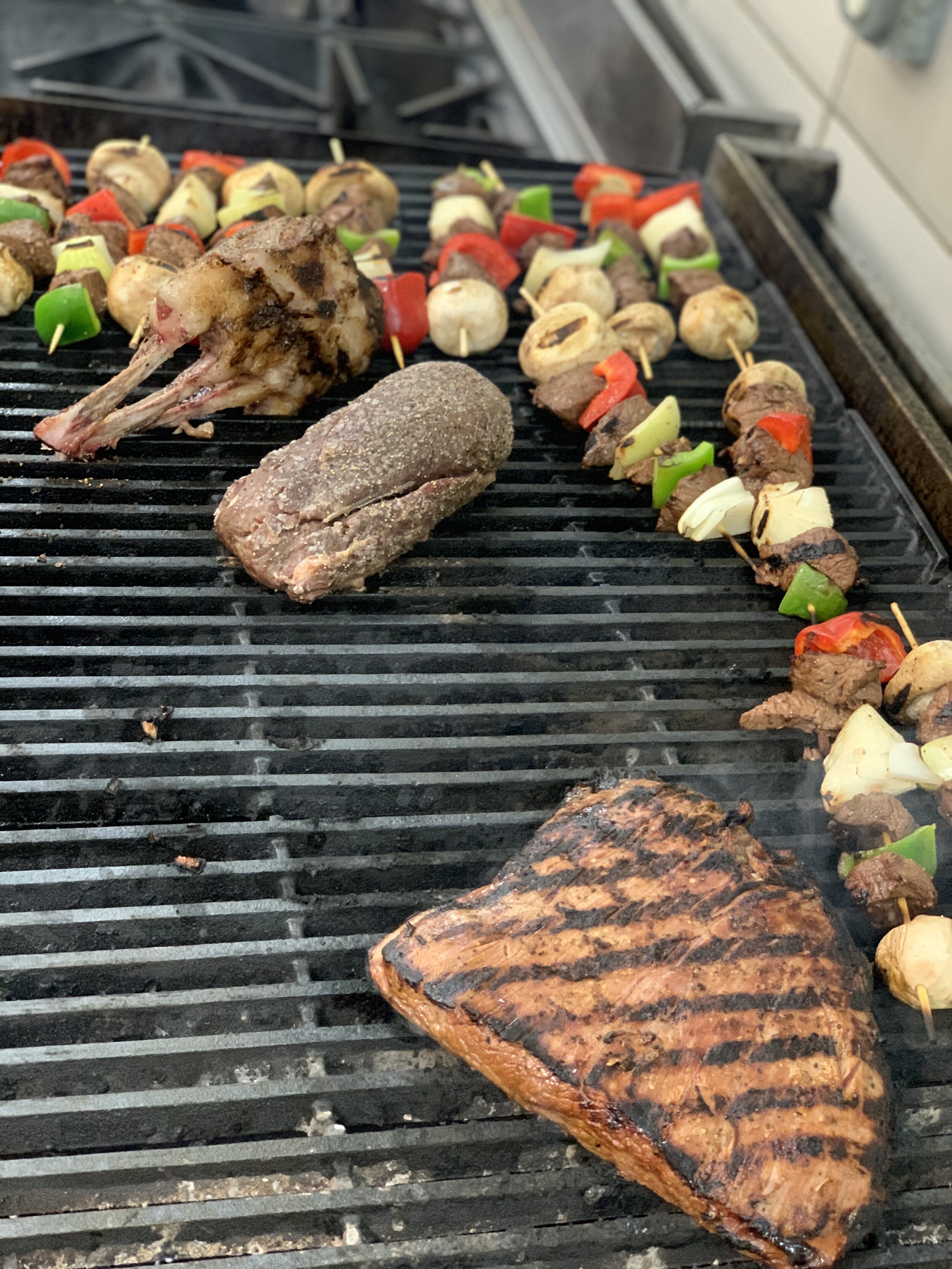
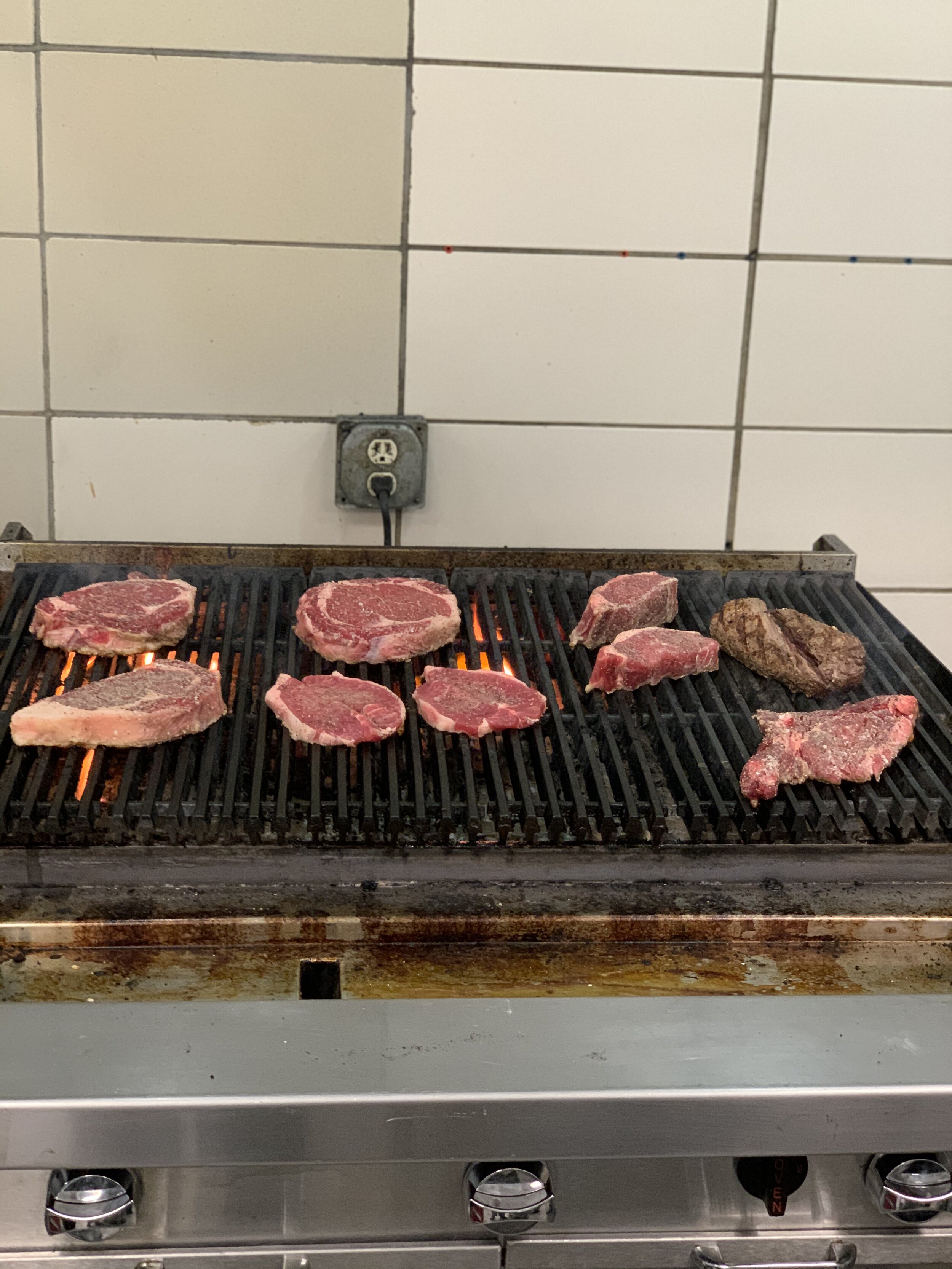
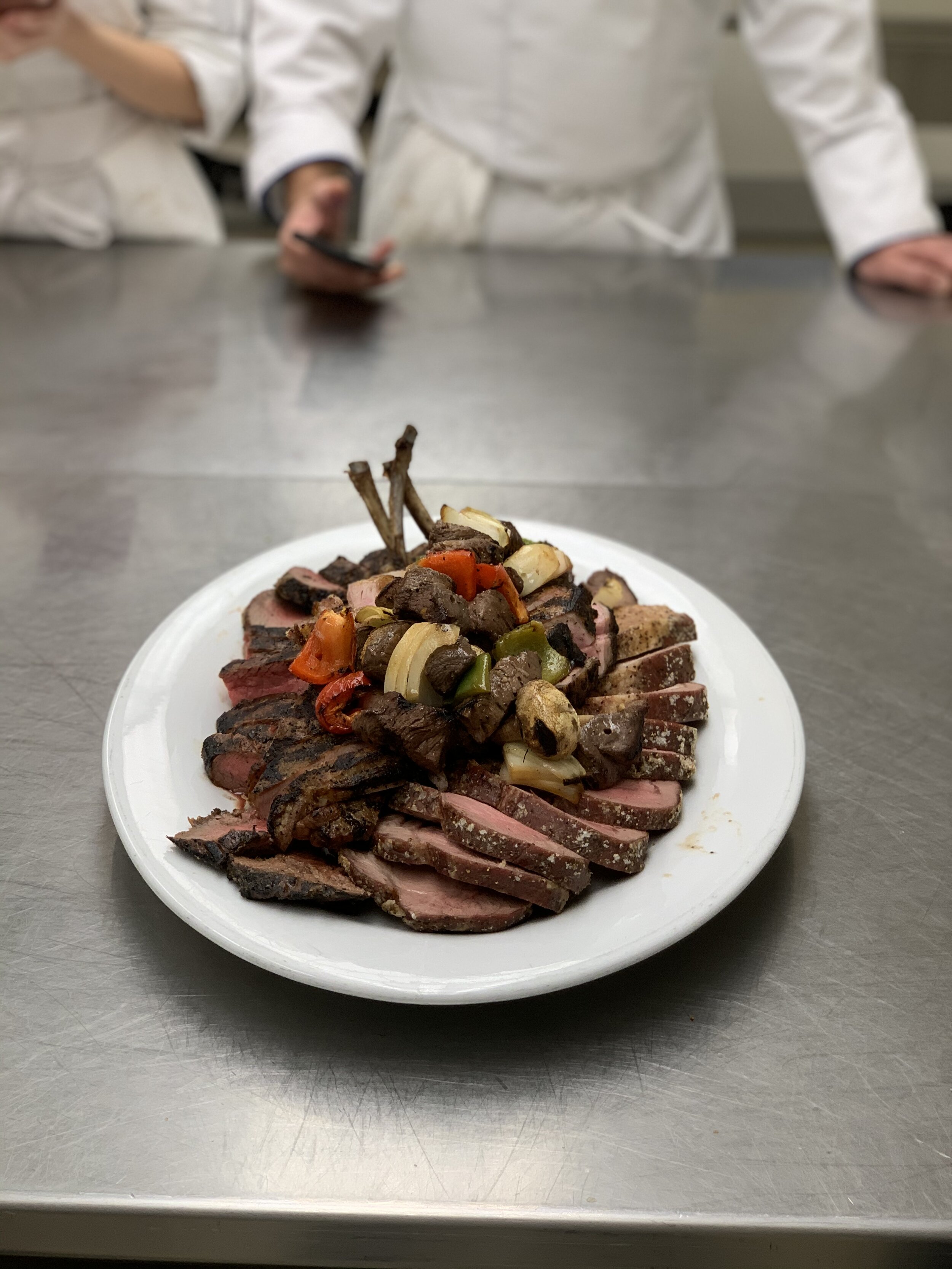

MEAT! This week we learned all about beef and pork. There is so much to learn; it's a bit overwhelming. We barely scratched the surface, but you have to start somewhere. We learned the components of the muscles, how different muscles are used, and how that impacts flavor and texture, cuts, and how the meat is inspected and graded. Fat is what gives meat flavor. The more marbling there is in a cut of beef, the higher it is graded. How the muscle is used determines how tender or tough a cut of meat is. So, the shoulder, for example, in beef or pork, is used a lot. So, those cuts are rather tough. However, the tenderloin, located on the back, is rarely used, so those cuts are incredibly tender, hence the name.
In class, we started off making Beef Stroganoff, which uses moist heat cookery. You can cook meat for a long time in a liquid that breaks down the connective tissue making heavily used muscles tender and flavorful. We then made a different variety of meat as a class so we could taste a variety. We made ribeyes, rib roasts, kabobs, flank steak, tenderloins, pork tenderloins, pork chops, and lamb chops. It was so much meat! We got to sample it all, and even though I've had all the meats we cooked before, it was fascinating to taste it next to each other. To take a bite of tenderloin after ribeye and feel the difference in flavor and texture was powerful. You pick up on nuances you might not if you eat tenderloin one week and ribeye the next.
Next week, more meat!